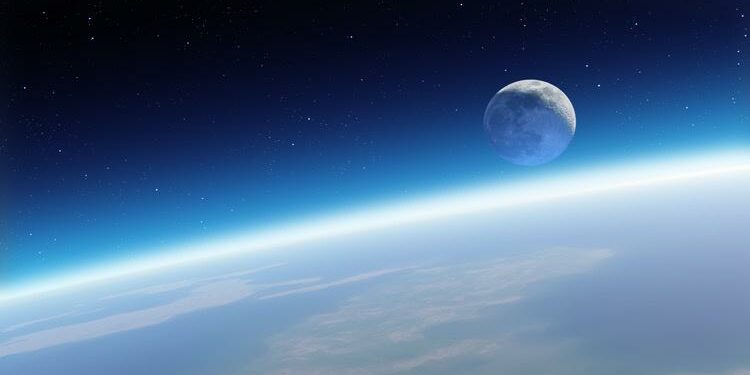The United States National Aeronautics and Space Administration (NASA) is seeking proposals from nuclear and space industry leaders to develop innovative technologies for a fission surface power system for lunar power applications, hoping to deploy such a system by 2030.
Chemical fuel and solar panels will no longer be enough to meet the demands of human space exploration or to power an outpost on an alien world. Lunar nights are -280°F and last 14 days. The batteries to store solar power for 14 days would also be prohibitively heavy. The amount of fossil fuel that would be needed to survive these nights would be a prohibitively large weight. A 55-gallon drum of petroleum alone weighing about 400 pounds would cost about $5 million to lift into space. And it wouldn’t last very long.
Of course, with no air it’s tough to use fossil fuels. But highly oxidizing non-fossil chemical fuels, like liquid oxygen, liquid hydrogen or dinitrogen tetroxide combined with hydrazine are even more expensive, a bit dangerous to use and needed for rocket fuel. And beyond Mars, things get a lot worse.
So an actual nuclear fission reactor, carrying out continuous chain reactions for many years, is needed.
The fission surface power project is sponsored by NASA in collaboration with the Department of Energy (DOE) and Idaho National Laboratory (INL) to establish a durable, high-power, sun-independent power source for NASA missions on the moon by the end of the decade, as well as potential subsequent missions. The proposal request targets the initial system design.
Published last month, the Request for Proposals calls for ideas for a flight-ready small fission reactor powered by low-enriched uranium. The fission surface power system should be able to provide 40 kWe of continuous power for at least 10 years in the lunar environment.
It must fit within a launch configuration of a 12-foot in diameter cylinder and 18-foot length, and weighs less than 13,300 lbs. It should also be able to switch itself on and off independently. The FSP should be able to operate from the deck of a lunar lander or to be removed from the lander, placed on a mobile system and transported to another lunar site for operation.
Proposals are due by February 19, 2022. The maximum contract award is $5 million.
Battelle Energy Alliance, which manages INL for DOE’s Office of Nuclear Energy, said there has been significant interest from industry since a draft of the RFP was released in December 2020.
“The feedback and enthusiasm we continue to see for space nuclear power systems has been very exciting,” said Sebastian Corbisiero, the Fission Surface Power Project lead at INL. “Providing a reliable, high-power system on the moon is a vital next step in human space exploration, and achieving it is within our grasp.”
“Plentiful energy will be key to future space exploration,” added Jim Reuter, associate administrator for NASA’s Space Technology Mission Directorate in Washington, DC, which funds NASA’s fission surface power project. “I expect fission surface power systems to greatly benefit our plans for power architectures for the moon and Mars and even drive innovation for uses here on Earth.”
This is not the first time nuclear has made an appearance in space. This summer NASA marked the 60th anniversary of a nuclear-powered spaceflight. The Transit IV-A was an experimental navigational satellite with a radioisotope-powered generator, launched by Johns Hopkins University Applied Physics Laboratory from Cape Canaveral on 29 June 1961.
Since then almost all unmanned missions to the planets have used Pu-238 as a power source. But to support humans off-planet requires quite a bit more continuous power.
Idaho National Laboratory (INL) has selected Aerojet Rocketdyne
AJRD
as the lead subcontractor for the first of three phases toward the development of a dynamic radioisotope power system for a lunar demonstration mission by the late 2020s as outlined in Space Policy Directive-6. It is three times more powerful than previous devices.
NASA’s fission surface power project expands on the efforts of the agency’s Kilopower project, which ended in 2018. The Agency said a future lunar demonstration will pave the way for sustainable operations and even base camps on the Moon and Mars.
Kilopower is a small, lightweight fission power system developed at the DOE’s National Nuclear Security Administration (NNSA) laboratory in partnership with NASA. The system was successfully demonstrated in the Kilopower Reactor Using Stirling Technology (KRUSTY) experiment, which was conducted at the NNSA’s Nevada National Security Site from November 2017 to March 2018. KRUSTY used high-enriched uranium powering a heatpipe system and Stirling engine to generate electricity.
But the United States needs to move fast or China will pass us by. China is developing a more powerful small nuclear reactor for its moon and Mars missions. According to researchers involved in the project, the reactor can generate 1 MW of electric power, 100 times more powerful than the devices NASA is looking at.
It takes a lot of power to produce oxygen, water, heat, food, charge rover batteries, manufacture tools and special materials, and smelt ore for metals.











